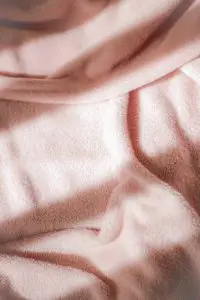Plaid and checkered patterns are widely known patterns. They are among the most common types of patterns with a large variety of patterns in the fashion industry. You might have seen a plaid or checkered pattern at least once. You’ve probably even worn them before. Plaid and checkered patterns come in a wide variety, making it difficult to differentiate the different types. Some people also find it difficult to distinguish between plaid and checkered patterns. There are a lot of controversies when it comes to checkered and plaid patterns, but this checkered vs plaid comparison will objectively explore the history of checkered and plaid patterns, their differences, and their different types.
Checkered vs Plaid – Overview
Checkered and plaid are both patterns consisting of long bands or stripes that run vertically and horizontally. These bands/stripes intersect several times and can include multiple colours.
These inter-crossing lines constitute a significant similarity between checkered and plaid patterns. However, this does not mean that the two are the same.
These patterns were usually made by weaving dyed wool of different colours in a repeating pattern. Although checkered and plaid patterns aren’t exclusively woven nowadays, they are usually printed on fabrics to achieve cost efficiency and efficient time management.
It is usually said that all plaid patterns are checkered patterns while all checkered patterns aren’t plaid patterns. However, some designers may argue that all designs are plaid designs, with checkered patterns forming a subset of the plaid category. Again, some say that checkered and plaid patterns are interchangeable, and the terms can be used interchangeably.
To fully understand checkered and plaid patterns, let’s look at their history.
Checkered Vs. Plaid – History of Checkered and Plaid Pattern
- Origin
The pattern we know as plaid today was called “Tartan”. Tartan was a pattern made by alternating stripes or bands of dyed wool woven at right angles to each other. Plaid was initially the heavy cloak worn to protect Scottish travellers from Scottish winter’s driving snow and pouring rain. The plaids are the fabrics that bore the pattern. However, when tartan crossed the sea into the New World, plaid and tartan became synonymous.
The checkered pattern also came from tartans. The difference is that the warp and the weft are made to have equal thickness during the weaving process, and there is always equity in how they are woven to create precise patterns of equal shapes and sizes. The plaid, however, has more versatility, and the thickness of bands/stripes can be varied.
Plaid became popular in Scotland in the 1700s. Back then, plaid patterns differed from one another due to geometrical differences. Weavers made plaids according to the limited number of colours and dyes available to them in that region. As time progressed, plaid patterns became more and more associated with the region they originated from and became specific to a family or clan. After that, they also began to hold political significance when plaids became military uniform.
- Banned in England
The tartan began to hold political significance when it became adopted as the military uniform. It evolved from a Scottish family symbol into a military uniform with the Jacobite uprising against the English monarchy. During the Scottish rebellion of 1745, the Royal Highland Regiment wore a pattern called the Black Watch, which is unaffiliated with any clan or family.
When the ruling English crushed the Highlanders and their resistance, the ruling English enacted the dress act of 1746, which banned tartans, including all plaids and checks. This wasn’t because of the pattern itself, but because the green and dark blue patterns of the Black Watch (and tartans in general, both plaid and checkered) became associated with rebellion. However, tartans became a symbol of Scottish unity when the law was later repealed after nearly a century.
- Coming to America
The Buffalo plaid was the first plaid traded in America by a Scotsman. It was made from red and black woollen yarns. As for how the “buffalo” name came about, some individuals believe that a Scotsman named Jock McCluskey made fabrics with red and black tartan patterns (the buffalo pattern) and traded the fabric with North Americans in exchange for buffalo. While some said that a certain Woolrich Woolen Mills claimed that one of his designers created the tartan pattern after one he had seen and named it after a herd of buffalo he owned.
- The popularity of the plaid/check
In 1924, Men’s plaid wear began to be produced. At the time, plaids and checks were seen as work-wear and even casual wear, and their popularity increased. Plaid patterned clothes became the go-to for work and casual wear.
In 1949 when the women’s version of the plaid wear began to be produced, its popularity skyrocketed. Plaids began to be found everywhere. Plaids and checks were used to make pillowcases and bedsheets. It was used in home decor and the interior of cars and was found in almost every wardrobe.
In the 1990s, plaids and checks became an integral part of grunge fashion, boosting its popularity. Due to its versatile nature, it could be worn in various styles and paired with different types of clothing. This versatility made it possible for people with various fashion tastes to unlock their unique styles.
Although there weren’t many distinctions between checkered and plain patterns, It can be seen from the history above that the general name for checkered and plaid patterns was originally tartan, and the difference lies in their weaving process.
Checkered Vs. Plaid – Symmetrical difference
Checkered fabrics are woven to make the pattern of solid squares without separate lines. The pattern is usually made up of horizontal and vertical equal bands or stripes which criss-cross to form even squares. These squares could be big or small depending on the thickness of the stripes, which could be varied to achieve big checks or small ones. Either way, checks usually feature evenly spaced squares. The squares are always geometrically symmetrical, unlike the plaid pattern, which can be symmetrical or asymmetrical. This gives the checkered pattern a relatively simple design that isn’t as complicated as plaid.
Plaid patterns usually feature stripes of varying widths and also distances apart. The horizontal and vertical lines that criss-cross isn’t always the same width or thickness. This forms rectangles of unequal sizes, which causes asymmetry. However, altering the thickness of the warp or the weft brings about versatility and the ability to create many more patterns. The property of making patterns with stripes and bands of different colours and variable thickness makes plaid patterns even more complicated than checkered patterns.
Checkered vs plaid – Types of patterns
There are many checkered and plaid patterns. Some individuals believe that they’re all plaids, some believe that they are all checkered, and others believe that checkered and plaid patterns are the same. However, for the sake of objectivity, the listed patterns below aren’t going to be categorised under checkered or plaid.
- Buffalo pattern: This pattern has similar-sized checks with big boxes formed by the intersection of usually red and black yarns. Buffalo checks are also called Buffalo plaids. It is mainly used in home interior decor and for making casual shirts.
- Argyle pattern: This is a pattern comprised of diamond-shaped checks with overlapping motifs. These diamond shapes are of equal sizes. They are often used to make men’s sweaters and socks.
- Gingham pattern: These are patterns with checks that contain small and equal squares. The warp and weft are usually always on a plain white background making white a characteristic colour of the gingham check.
- Shepherd check: This is similar to the gingham check but is set against a twill background. This check pattern was initially used in a particular region of Scotland to cover sheep. This once sheep blanket has become a part of man’s wardrobe.
- Checkerboard pattern: These are general patterns of checks with equal-sized squares resembling a checkerboard game pattern.
- Houndstooth pattern: This is a pattern formed by checks characterized by sharp and pointy edges. The houndstooth pattern was named after a dog bite.
- Glen checks: Glen combines the horizontal and vertical stripes/bands with the texture of the hound’s tooth. It provides a depth perception you don’t see with flat checkerboards.
- Madras pattern: This check originated from India and is characterized by bands of exotic colours. Its colours are known to run when washed, earning the name “the bleeding plaid”.
- Windowpane pattern: This pattern has thin bands of light-coloured bands forming checks on a contrasting solid background. These windowpane checks are usually wide-spaced.
- Dupplin checks: These are patterns made from windowpane checks on another check which is often a houndstooth check.
- Pin checks: These are checks with thin stripes, usually one or two yarns thick. The warp and the weft criss-cross very closely, forming tiny squares which look like dots from a distance.
- Gun club check: These are double-patterned checks with alternating bands in two or more colours intersecting on a light background, creating checks.
- Tattersall check: This is similar to a windowpane pattern, consisting of thin bands/stripes on a white background. These bands are usually two alternating colours, creating a multidimensional effect.
- Graph check: This is a pattern with equal squares formed by a single colour’s thin stripes on a white background, looking like a graph paper.
- Mini check: This pattern is obtained from pin check and gingham check.
- Ichimatsu check: This pattern is formed by two alternating checks of different colours. It is similar to the checkerboard pattern, the difference being that it may have other designs embedded within it.
A Great Online Class: Color Theory for Textile Projects by Domestika
If you are interested in learning more about how you can create a successful name for your business, we recommend taking a look at the online class “Color Theory for Textile Projects”.
The course is currently under promotion, but you can use the discount code: T_BROWNLEES-PROMO to get an additional 10% discount on your purchase.
This online class offered by Domestika, at a very inexpensive price covers all you need to know to develop your textile project by leveraging color theory to create the perfect color palette. If you apply to the course through the link below you’ll be supporting 440 Industries, and we thank you for it!
Conclusion
Checkered and plaid patterns are said to have withstood the test of time. Their versatility aids the availability of different types, with distinctive qualities that suits different tastes. However, it is difficult to tell them apart because, quite frankly, they are very often used interchangeably. Nonetheless, we hope that this checkered vs plaid comparison has given you insight into their history, their subtle differences, and their different types.







